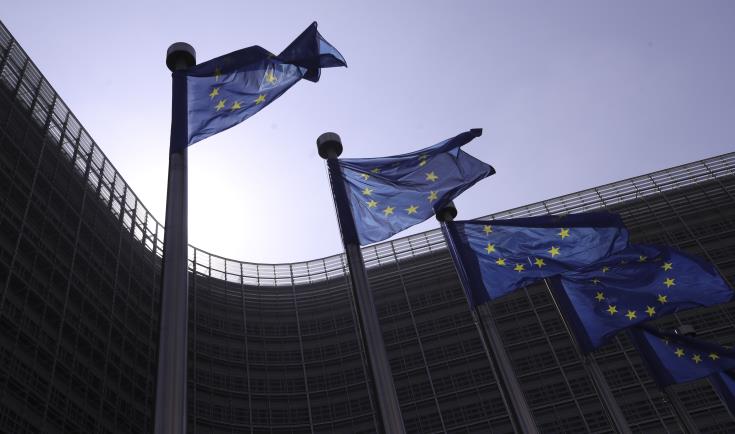Following an unprecedented crisis due to the pandemic, Cyprus’ recovery and resilience plan responds to the urgent need of fostering a strong recovery and making Cyprus future ready. The reforms and investments in the plan will help Cyprus become more sustainable, resilient and better prepared for the challenges and opportunities of the green and digital transitions. To this end, the plan consists of 75 investments and 58 reforms. They will be supported by €1.006 billion in grants and €0.2 billion in loans. 41% of the plan will support climate objectives and 23% of the plan will foster the digital transition.
The transformative impact of Cyprus’ plan is the result of a strong combination of reforms and investments, which address the specific challenges of Cyprus. The reforms address bottlenecks to lasting and sustainable growth, while investments have been selected to enhance sustainable growth and the digital transition, and increase productivity. All reforms and investments have to be implemented within a tight time-frame, as the Regulation on the Recovery and Resilience Facility provides that they have to be completed by August 2026.
The plan will foster economic growth and create jobs. It will lift Cyprus’ gross domestic product by 1.1% to 1.8% by 2026. This boost to the economy will bring up to 3,000 citizens into jobs. Cyprus will benefit significantly from the Recovery and Resilience plans of other Member States, for instance through exports. These spill-over effects account for 0.5 percentage points of gross domestic product in 2026. These estimates do not include the possible positive impact of structural reforms, which can be substantial. This demonstrates the added value of joint and coordinated action at the European level. When designing the plan, Cypriot authorities consulted national and regional social partners and stakeholders, while pursuing a close dialogue with the Commission ahead of the formal submission of the plan on 17 May 2021. On 8 July 2021, the Commission gave its green light to the plan. On this occasion, President von der Leyen symbolically transmitted the Commission’s assessment to President Anastasiades during a visit in Cyprus. The plan was in turn adopted by the Council on 28 July opening the door to its implementation and financing.
Green transition.
In the area of climate and environmental policies, Cyprus faces the challenge of high greenhouse gas emissions, gaps in water and waste management, the need to safeguard biodiversity and wildlife.
Key measures for the green transition
The plan will contribute €100 million to the EuroAsia Interconnector project, which will connect Cyprus to the EU electricity network and boost renewable energy production. Furthermore, the green investments of the plan include various support schemes worth €89 million, promoting energy efficiency and renewables and combating energy poverty. The plan contains as well €87 million of investments promoting sustainable and green mobility and encouraging a shift from private cars to public transport, as well as promoting the use of electric vehicles. In addition, several reforms are included which will introduce green taxation, reform the electricity market and facilitate the use of electric vehicles.
Example project: Ending energy isolation – Project of Common Interest “EuroAsia Interconnector”
Cyprus’ recovery and resilience plan provides a tangible contribution of €100 million to building a cross-border electricity interconnector with a total length of 1,208 km between Crete, Cyprus and Israel. This large investment will receive funding also from other sources, namely the Connecting Europe Facility, a loan from the European Investment Bank, commercial loans and equity. The project aims to ensure security of supply and more competitive wholesale electricity prices in Cyprus. It should also enable the increased use of electricity from cleaner sources, in particular renewables, by connecting the electricity network of Cyprus to the EU continental system.
Digital transition.
Digital challenges for Cyprus include connectivity, in particular the coverage of fixed very high capacity network. Cyprus also needs to make efforts to enhance digital skills in all population groups. Another challenge for Cyprus concerns digital public services as the level of online interaction between public authorities and the general public should be improved.
Key measures for the digital transition
Cyprus’ recovery and resilience plan supports the digital transition. Investments and reforms support connectivity by enhancing access to communication infrastructure and supporting an inclusive digital transformation. €133 million will be invested for the digitalisation of public services, as the plan includes building a secured, integrated and modern digital architecture for the transition of digital public services. The plan also promotes digital education and skills, notably by upgrading digital infrastructure and tools in schools, providing teachers with digital training and upskilling and reskilling programmes for different parts of the Cypriot society. It also enables the digital health transition by modernising the IT systems of the National Health System and deploying cross border e-health services.
Example project: Connectivity for Cyprus through new submarine cables
New submarine cables will be installed to connect Cyprus with the Greek system, through which Cyprus will have access to some of the region’s most important internet exchanges (Athens, Sofia and Chania). The cables will offer a higher performance, in terms of resilience and security compared to existing dated cables, and will therefore improve connectivity on the island.
Economic and social resilience.
Key macro-economic challenges for the Cyprus’ economy include the sustainability of public finances and high household debt, limited access to finance for SMEs, large inefficiencies in public administration the high economic dependency on a limited number of sectors, the need to make health care system more resilient and the need for upskilling and reskilling of work force. In the social domain, key challenges include the low outreach and activation of young people, the education and training system, and weaknesses in early childhood education and child care.
Key measures in reinforcing economic and social resilience
The plan reinforces economic and social resilience with measures aimed at setting the country on the right path towards establishing a competitive and resilient economy with a diversified production base and social integration. Cyprus will notably invest €64 million in research and innovation and €43.4 million to improve access to finance for SMEs. Significant investments and reforms aim at increasing the efficiency, accessibility and resilience of the health care system, by investing €46.5 million to upgrade state hospitals. Concerning the labour market and young people, Cyprus will invest €15 million in reskilling and upskilling and €50.4 million in upgrading school infrastructure. Important reforms will equally be implemented aimed at strengthening financial stability by reducing the high level of NPLs, improving the efficiency of public administration and of the justice system and fighting aggressive tax planning.
Example project: Supporting early childhood education and child care (€20.5 million)
This project will improve the availability and quality of early childhood education and care and will increase the labour market participation of carers, which are often women. Moreover, it will improve the availability and quality of child education and care across the country, especially at local level. Importantly, it will also develop, for the first time, a national strategy on early childhood education and care (ECEC) and an accompanying action plan.
The plan is consistent with relevant country-specific challenges and priorities identified in the European Semester, the annual cycle of coordination and surveillance of the EU’s economic policies. For a detailed explanation of the European Semester see the following link: The European Semester explained | European Commission (europa.eu)




